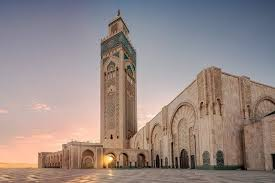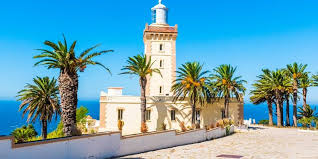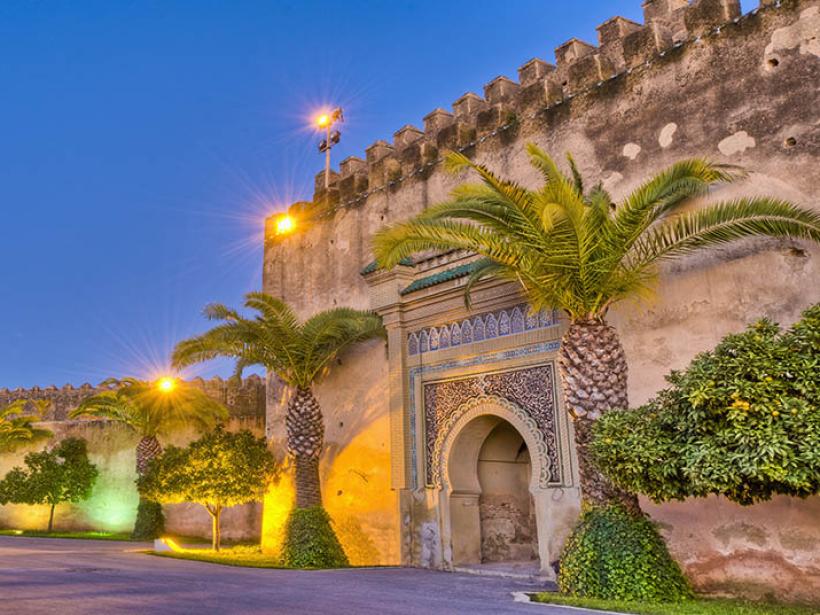Welcome to the enchanting world of Imperial Morocco, where history dances with vibrant culture and breathtaking landscapes. This North African gem boasts a rich tapestry woven from centuries of tradition and innovation. From bustling souks filled with exotic spices to stunning architecture that whispers tales of empires past, there’s something magical waiting around every corner.

Whether you’re a seasoned traveler or planning your first adventure, Morocco offers an experience like no other. The cities we’ll explore are not just destinations; they’re living museums that invite you to immerse yourself in their stories. So pack your bags and prepare for an unforgettable journey through five must-see highlights that capture the essence of this fascinating region!
Table of Contents
Introduction to Imperial Morocco
Imperial Morocco refers to the period of Moroccan history from the 16th century until the early 20th century when the country was ruled by a succession of powerful dynasties. This era saw Morocco reach its peak in terms of political influence, economic prosperity, and cultural development.
The first dynasty to establish control over Morocco during this time was the Saadian dynasty, which ruled from 1549 to 1659. They were followed by the Alaouite dynasty, which ruled from 1666 until Morocco gained independence in 1956.

During the Imperial period, Morocco experienced significant growth and expansion. The country’s strategic location between Europe and Africa made it an important hub for trade and commerce. The ruling dynasties also implemented strong central government systems and established diplomatic relations with European powers.
One of the most notable achievements of Imperial Morocco was its architectural legacy. The country is home to numerous impressive structures such as palaces, mosques, and fortified cities that showcase a unique blend of Islamic, Moorish, and European influences.
Another important aspect of Imperial Morocco was its thriving arts and culture scene. The country produced renowned artists, poets, scholars, and historians who made significant contributions to their fields.
The Historic City of Marrakech
Marrakech, a vibrant jewel of Imperial Morocco, pulses with life and color. The bustling souks invite visitors to explore their maze-like alleys filled with handicrafts, spices, and textiles. Each corner reveals artisans showcasing their skills.
The city’s history dates back to the 11th century when it was founded by the Almoravid dynasty. It quickly became a major trading hub, connecting Africa, Europe, and Asia. Over the centuries, Marrakech has been ruled by various dynasties, each leaving their mark on the city’s culture and architecture.
One of the most iconic landmarks in Marrakech is the Koutoubia Mosque, with its towering minaret visible from almost every corner of the city. Built in the 12th century, it is considered a masterpiece of Moorish architecture.

Another must-see attraction is the Bahia Palace, a stunning complex built in the late 19th century for one of Morocco’s wealthiest families. Its intricate tilework, carved wood ceilings, and lush gardens make it a popular spot for tourists.
The heart of Marrakech is Djemaa el-Fna square, where snake charmers, storytellers, and musicians entertain crowds day and night. The square also transforms into a bustling food market at night, with stalls selling traditional Moroccan dishes such as tagine and couscous.
Marrakech is also known for its beautiful riads – traditional Moroccan houses with central courtyards that have been
The iconic Koutoubia Mosque towers over the cityscape. Its stunning minaret is a beacon for travelers seeking to immerse themselves in history. Just beyond lies the serene beauty of Jardin Majorelle, where exotic plants create an oasis amidst the urban chaos.
Don’t miss Jemaa el-Fnaa square as dusk falls; it transforms into an enchanting spectacle with street performers, musicians, and food stalls. The tantalizing scents waft through the air beckoning everyone to indulge in local cuisine.
Explore Marrakech’s architectural wonders like Bahia Palace and Saadian Tombs that echo tales from centuries past. This city captures both tradition and modernity beautifully, making every moment unforgettable.
Exploring the Beauty of Fez
Fez, often regarded as the cultural heart of Morocco, captivates with its rich history and stunning architecture. Walking through the narrow streets feels like stepping back in time.
The medina is a UNESCO World Heritage site, bursting with vibrant souks and artisans showcasing their crafts. The intricate mosaics and towering minarets tell tales of a thriving past.
One can’t miss the Bou Inania Madrasa, an architectural gem adorned with detailed carvings. The serene atmosphere invites quiet reflection amidst bustling life.
Don’t forget to visit the tanneries. The sight of leather being dyed in vivid colors offers an authentic glimpse into traditional practices that have persisted for centuries.
As you wander, savor local delicacies such as b’stilla or delicious tagine dishes. Fez truly enchants every traveler with its unique fusion of culture, art, and gastronomy waiting to be discovered at every corner.
Discovering the Ancient Ruins in Meknes
Meknes, one of Morocco’s imperial cities, is a treasure trove of ancient ruins waiting to be explored. The city’s rich history unfolds through its impressive architecture and fascinating remnants from the past.
Begin your journey at the Bab Mansour gate. This stunning entrance boasts intricate tile work and grand arches that speak volumes about the craftsmanship of yesteryears. It serves as a perfect introduction to what lies beyond.
Wander through the vast grounds of the Royal Stables, where horse enthusiasts in the 17th century once marveled at thousands of horses. The sheer scale will leave you in awe.
Don’t miss out on Volubilis, just a short drive away. These Roman ruins are remarkably preserved and showcase beautiful mosaics that depict scenes from mythology and daily life.
Each corner you turn in Meknes reveals layers of history that breathe life into this captivating city.
Visiting the Coastal City of Essaouira
Essaouira is a gem on Morocco’s coast, where the Atlantic waves crash against ancient ramparts. The city’s medina, with its blue and white buildings, invites you to wander through narrow alleys filled with vibrant art galleries and quaint shops.
The bustling souks offer local crafts that capture the essence of Moroccan culture. Don’t miss out on trying freshly caught seafood at one of the many seaside restaurants. The grilled sardines are a must-try for any food lover.
As you stroll along the beach, soak in views of kite surfers dancing across turquoise waters. Essaouira’s relaxed vibe contrasts sharply with larger cities like Marrakech or Fez, making it an ideal escape.
You might also encounter musicians sharing their talents in lively squares. This coastal destination blends history, art, and nature seamlessly into a unique experience waiting to be explored.
Experiencing Royal Culture in Rabat
Rabat, the capital of Morocco, is a treasure trove of royal culture. As you stroll through its picturesque streets, the blend of modernity and history captivates your senses.
Begin at the Royal Palace, where grand architecture showcases Moroccan craftsmanship. This impressive structure isn’t just visually stunning; it represents the heart of political power in the country.
Next, wander to Hassan Tower. This iconic minaret serves as a reminder of Rabat’s glorious past and offers breathtaking views over the city. The nearby Mausoleum of Mohammed V adds an air of reverence with its intricate mosaics and serene atmosphere.
Don’t miss out on exploring the Oudayas Kasbah. Its blue-and-white houses create a striking contrast against vibrant gardens and waves crashing below cliffs. Here, you’ll feel like you’ve stepped back in time while sipping mint tea at a cozy café overlooking the river.
Rabat invites you to immerse yourself fully in its regal ambiance.
Tips for Traveling to Imperial Morocco
Traveling to Imperial Morocco is an adventure filled with vibrant culture and rich history. Start by learning a few basic Arabic phrases; locals appreciate the effort, and it opens doors to authentic interactions.
Pack layers. The weather can shift dramatically between day and night, especially in desert areas. Comfortable shoes are essential for exploring bustling markets or intricate medinas.
Consider traveling during the shoulder seasons of spring or fall for milder temperatures and fewer crowds. This timing enhances your experience when visiting popular sites.
Stay hydrated as you wander through cities like Marrakech or Fez where the sun can be relentless. Street food is tempting, but choose stalls with high turnover for fresher options.
Embrace local customs. Dress modestly, especially in rural areas, showing respect for cultural norms while enjoying all that this fascinating destination has to offer.
Conclusion
Imperial Morocco is a treasure trove of history, culture, and breathtaking landscapes. Each city offers its unique charm and story. From the bustling souks of Marrakech to the serene beaches of Essaouira, there’s something for every traveler.
As you explore this vibrant country, immerse yourself in local traditions. Savor the rich flavors of Moroccan cuisine and engage with the welcoming locals. The ancient ruins of Meknes tell tales from bygone eras while Fez enchants with its intricate craftsmanship.
Whether you’re seeking adventure or relaxation, Imperial Morocco has it all. Prepare your itinerary around these five must-see highlights to make every moment memorable. Your journey through this captivating land promises unforgettable experiences that linger long after you leave its enchanting borders.
Click here for related details.
Stay tuned on Travelyas for insight details.

